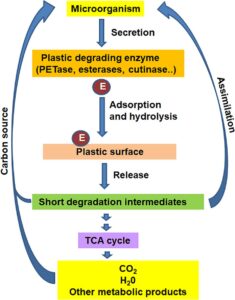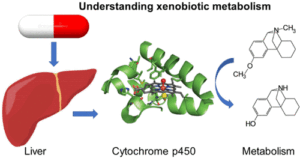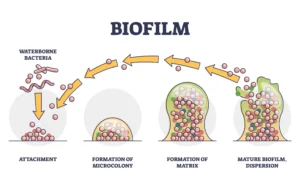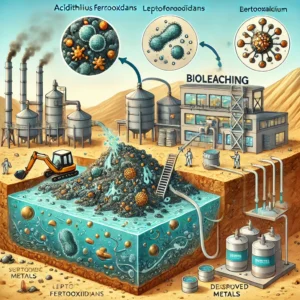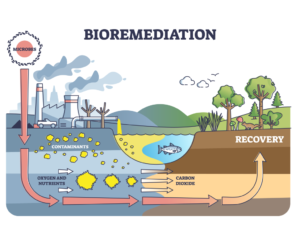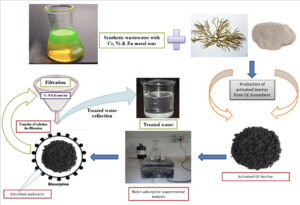Microbial Enhanced Oil Recovery (MEOR) is a biotechnology-driven process that uses microorganisms and their metabolic products to increase oil recovery from reservoirs. This technique is beneficial in recovering residual oil left after primary and secondary recovery methods. MEOR alters the properties of the oil, the reservoir, or both to facilitate enhanced oil recovery. The mechanism of microbial stimulation can be broadly categorized into the following:

1. Selection and Utilization of Microorganisms
Microorganisms used in MEOR can either be indigenous (present in the reservoir) or exogenous (injected into the reservoir). Commonly used microbes include species of Bacillus, Clostridium, and Pseudomonas. These microbes are selected based on their ability to survive in extreme reservoir conditions such as high temperature, pressure, salinity, and low nutrient availability.
2. Mechanisms of Microbial Stimulation
Microorganisms contribute to oil recovery through various mechanisms:
a. Biosurfactant Production
Microorganisms produce biosurfactants, which are surface-active compounds (e.g., rhamnolipids and lipopeptides). These reduce the interfacial tension between oil and water, mobilizing trapped oil droplets in porous rocks. This process enhances the oil’s flowability and displacement.
b. Biopolymer Production
Microorganisms generate biopolymers like xanthan gum and emulsan, which increase the viscosity of injected water. This reduces the water-to-oil mobility ratio, ensuring more efficient oil displacement.
c. Gas Production (Microbial Gas Flooding)
Microbes metabolize hydrocarbons or nutrients to produce gases like CO₂, CH₄, or H₂. These gases pressurize the reservoir, displace trapped oil, and create channels for oil flow. CO₂ also dissolves in oil, reducing its viscosity and enhancing mobility.
d. Organic Acid Production
Some microbes produce organic acids like acetic acid, which dissolve carbonate minerals in the reservoir. This improves rock permeability and creates additional pathways for oil flow.
e. Selective Plugging
Biomass and biopolymers produced by microbes can selectively plug high-permeability zones, redirecting injected water to low-permeability oil-rich zones. This improves sweep efficiency and enhances recovery.
f. Wettability Alteration
Certain microbes or their metabolic products alter the wettability of the reservoir rock surface. By converting oil-wet surfaces to water-wet surfaces, oil becomes more easily mobilized and displaced.
g. Hydrocarbon Degradation
Microbes can partially degrade heavy hydrocarbons, reducing oil viscosity. This enhances the flow of viscous oil in the reservoir.
3. Application Process
- Injection: Nutrients, oxygen (if needed), and exogenous microbes (if used) are injected into the reservoir to stimulate microbial activity.
- Propagation: Microorganisms grow, metabolize, and produce bio-products as they propagate through the reservoir.
- Oil Recovery: The combined effects of biosurfactants, gases, acids, and other microbial by-products increase oil displacement and recovery.
4. Advantages
- Environmentally friendly compared to chemical methods.
- Cost-effective for marginal or mature reservoirs.
- Compatible with various types of reservoirs, including heavy oil and carbonate reservoirs.
5. Limitations
- Sensitivity to reservoir conditions (temperature, pressure, pH, salinity).
- Slow microbial growth rates.
- Challenges in controlling microbial activity in situ.
- Risk of bio-clogging in unwanted zones.
MEOR has significant potential in improving oil recovery, especially in depleted or challenging reservoirs, making it a sustainable and economical approach in the oil and gas industry.

